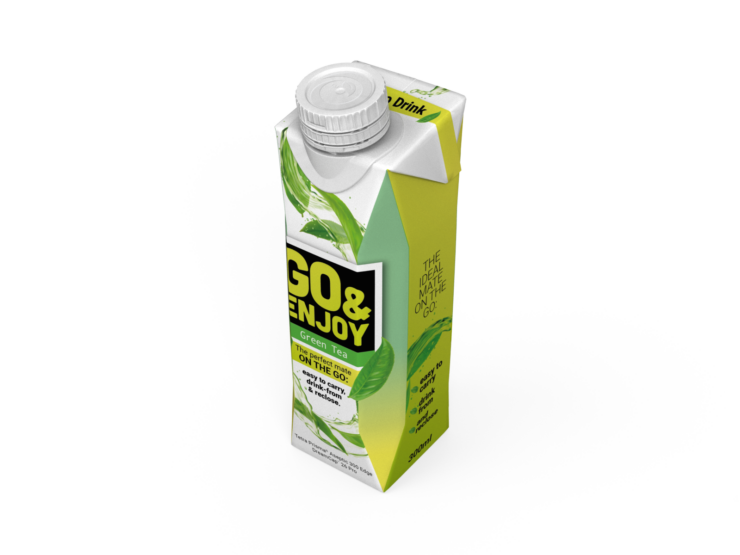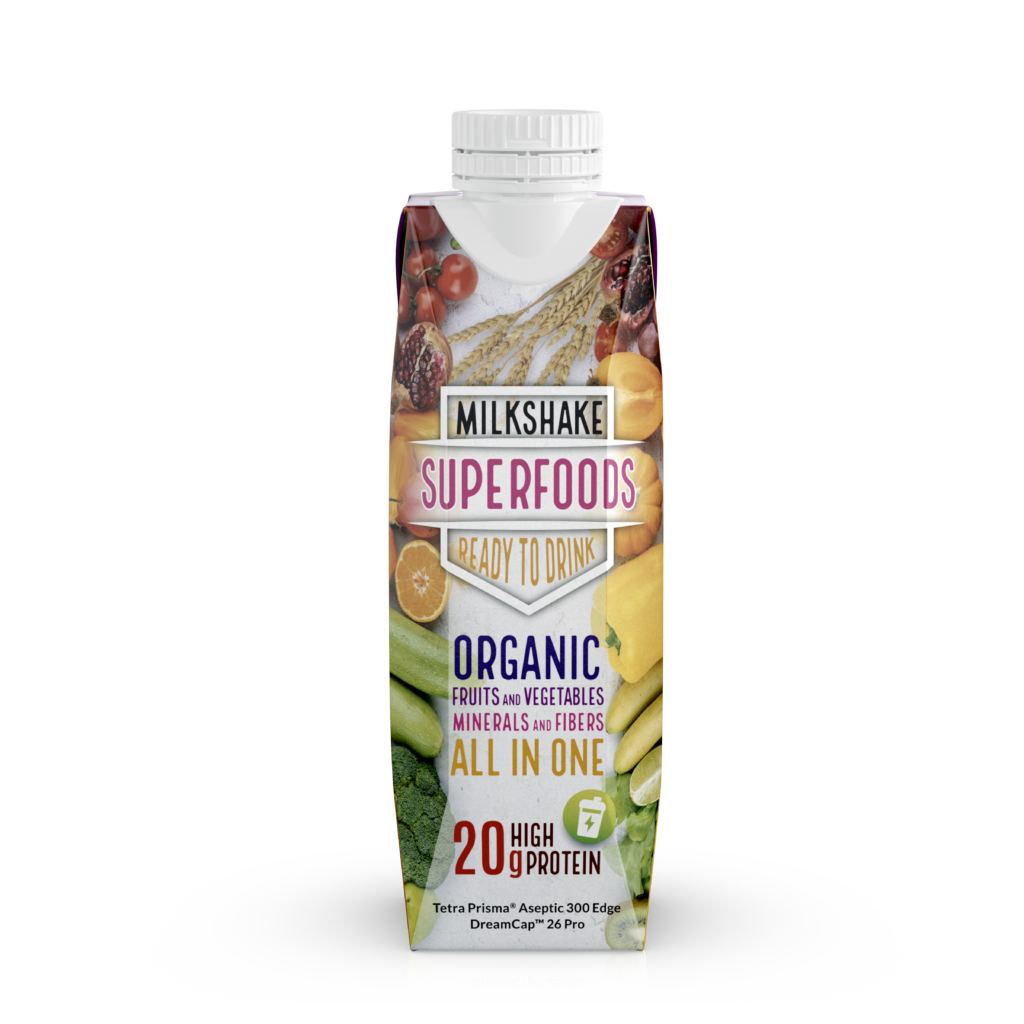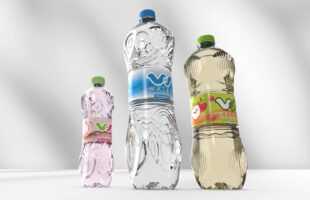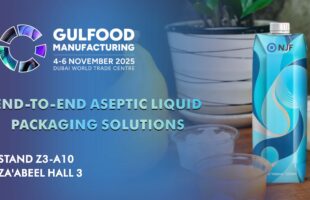
Courtesy of Tetra Pak
- Tetra Pak has collaborated with a leading European juice brand to launch the new Tetra Prisma® Aseptic 300 Edge beverage carton.
- By maximising the share of renewable material – paperboard and plant-based polymers, derived from responsibly sourced sugarcane – this new carton can significantly reduce its carbon footprint.
- Designed to appeal to young consumers and dynamic adults, the carton’s distinct look helps food and beverage brands stand out on the shelf while also benefitting from greater flexibility and production efficiency.
Tetra Pak has collaborated with a leading company in the European juices, nectars, and soft drinks markets to launch the new Tetra Prisma® Aseptic 300 Edge beverage carton. This innovative portion package stands out on the shelf, with its distinct look and ergonomic design catering to the preference of modern consumers for taller, slimmer packaging. Research[1] shows that, with buyers rethinking discretionary spending, a ‘less is more’ design approach is gaining in popularity, characterised by pared back simplicity. Designed for ease of use, the shape of the new paper-based carton package also makes it more comfortable to hold, particularly for smaller hands. Its wide opening ensures a steady flow for easy drinking, while its compact size makes it convenient for on-the-go consumption.
Product wastage is minimised by combining the slanted top of the Tetra Prisma® Aseptic 300 Edge carton with a DreamCap™ 26 Pro tethered closure. This helps to prevent litter, too, as the cap stays attached to the package; therefore, it can be collected alongside the carton once consumers have enjoyed their drink and put the container in the correct bin for recycling.
In addition, the leading European juice brand opted to increase the renewable share of material in the package to over 85 percent, which translated to reducing this carton’s carbon footprint by 76 percent.[2] This is achieved by combining paperboard from forests certified by Forest Stewardship Council™ (FSC™) and other controlled sources with plant-based polymers derived from responsibly sourced sugarcane. Its reduced climate impact is set to appeal to young consumers, who are more likely to make environmentally conscious purchasing decisions (as found in research from Harvard Business Review).[3]
The Tetra Prisma® Aseptic 300 Edge is ideal for a wide range of on-the-go beverages, including dairy, juices, and functional drinks. Available on the latest Tetra Pak® A3/CompactFlex filling machine, as well as on existing lines through a simple, cost-efficient upgrade, it brings the packaging configurations[4] on a single filling machine to five. This versatility enables quick switching between different packaging sizes and different opening systems, optimising production efficiency[5]and broadening the range of on-the-go offerings. The latter helps food and beverage (F&B) brands to select the package that best matches specific consumption needs, therefore attracting an even wider audience.

When it comes to transportation, the taller and slimmer shape of the package means it is possible to fit around the same number of litres and up to 10 percent more packages per pallet,[6] meaning fewer shipments while delivering more product.
Francesco Faella, Vice President Business Sector Ambient, Tetra Pak, comments: “By collaborating with a leading European juice brand and launching the Tetra Prisma® Aseptic 300 Edge, we are answering the industry’s call for added flexibility and stylish design options to help brands stand out on the shelf. Importantly, we are doing this while also addressing consumer preferences and expectations. Based on our recent global research,[7] environmental concerns remain high for 76 percent of respondents, with over 60 percent choosing products that have environmentally sound packaging in a bid to protect future generations and one-fifth showing preference for containers made of renewable materials.”
About Tetra Pak
Tetra Pak is a world leading food processing and packaging solutions company. Working with our customers and suppliers, we provide access to safe, nutritious food for hundreds of millions of people in more than 160 countries every day.
With over 24,000 employees worldwide, we commit to making food safe and available, everywhere, and we promise to protect what’s good: food, people and the planet.
More information about Tetra Pak is available at www.tetrapak.com.
[1] Tetra Pak-WGSN Design Trend Forecast 2023-2024
[2] Source: Carbon Trust™-verified Tetra Pak ‘Carton CO2 Calculator’ model version 10 (valid from April 2024). Scope: cradle-to-grave measurement of a Tetra Prisma® Aseptic 300 Edge carton with plant-based packaging materials and additional materials (i.e., cap) compared to a standard Tetra Prisma® Aseptic 300 Edge with fossil-based plastic. Geography: EU Industry data. For more information, visit carbontrust.com/tetrapak
[3] https://hbr.org/2023/09/research-consumers-sustainability-demands-are-rising
[4] The five packaging configurations include the following: Tetra Prisma® Aseptic 200 Edge with straw; Tetra Prisma® Aseptic 200 Edge with DreamCap™ 26 closure or DreamCap™ 26 Pro tethered closure; Tetra Prisma® Aseptic 250 Edge with straw; Tetra Prisma® Aseptic 250 Edge with DreamCap™ 26 closure or DreamCap™ 26 Pro tethered closure; Tetra Prisma® Aseptic 300 Edge with DreamCap™ 26 closure or DreamCap™ 26 Pro tethered closure.
[5] Addition of three formats in Quick Change, with Tetra Prisma® Aseptic 200 Edge and Tetra Prisma® Aseptic 250 Edge, hence improved flexibility and efficiency when compared with Tetra Prisma® Aseptic 330 Square.
[6] Compared with the Tetra Prisma® Aseptic 330 package in EU pallet with WASF open ends.
[7] Tetra Pak’s latest Sustainable Packaging consumer research, run in 2023, comprised a total of 14,500 consumer interviews based on an online questionnaire in 29 markets: Germany, France, UK, Italy, Belgium, Denmark, Netherlands, Poland, Portugal, Romania, Spain, Sweden, Saudi Arabia, Turkey, South Africa, Egypt, China, India, Japan, Australia, Indonesia, Philippines, South Korea, Vietnam, Brazil, USA, Mexico, Colombia, Argentina.








